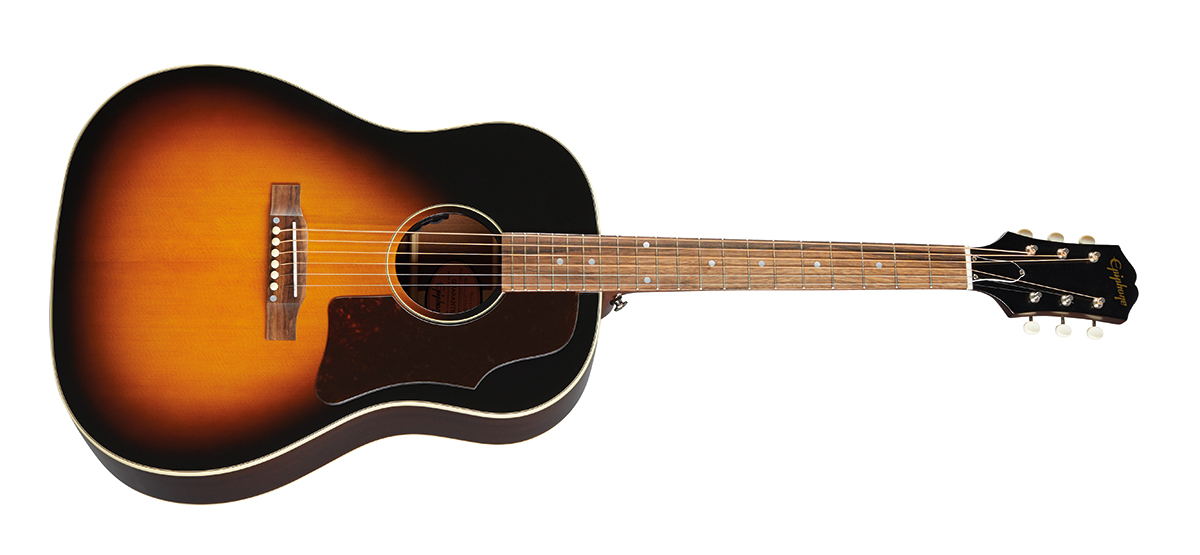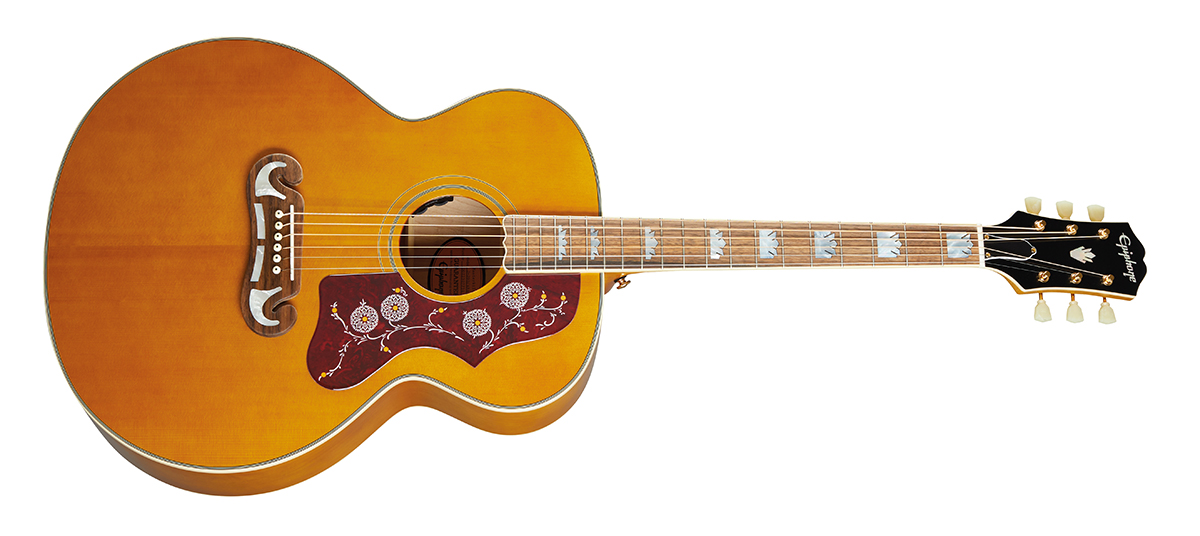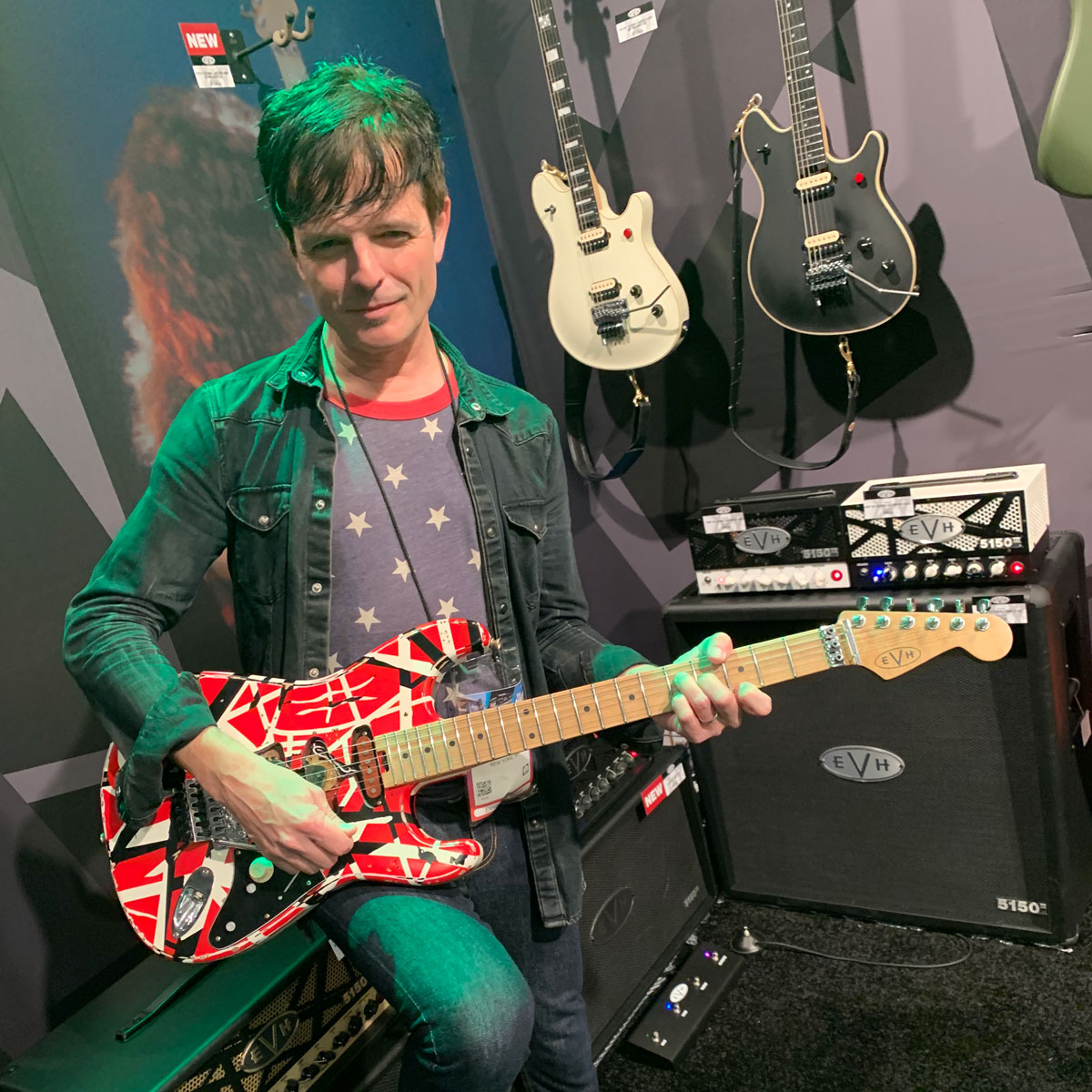Guitar World Verdict
The Epiphone Inspired by Gibson J-45 and J-200 closely capture the irresistible tones and appealing mojo of the originals at prices that won’t break the bank.
Pros
- +
All solid-wood construction.
- +
Aged finishes give them a worn-in feel.
- +
Classy builds.
- +
Good value.
Cons
- -
Nothing of note, but that high-end crispness will give way to warmth in time.
You can trust Guitar World
There's a good reason legions of diehard musicians proudly play Epiphone guitars – because they outperform more expensive brands and boast an undeniable quality-to-price ratio that’s hard to beat.
Following in Gibson’s towering reputation for impeccable craftsmanship, Epiphone has recently taken a lockstep approach in vastly improving their Gibson-counterpart line of guitars by debuting “Epiphone Inspired By Gibson,” an extensive collection of iconic acoustic and electric instruments designed from the original Gibson blueprints.
I zeroed in on the remarkable J-45 and J-200 acoustic guitars – a sloped shoulder and a super jumbo, respectively – from the “Epiphone Inspired By Gibson” Acoustic Collection, which also consists of the J-45 EC, Hummingbird and Hummingbird 12-string.
Features

Both guitars share all solid-wood construction, quarter-sawn spruce bracing, tapered dovetail neck joint, Indian laurel (similar to rosewood) fingerboard with 20 medium jumbo frets, 1.69-inch (43mm) nut width, and Fishman Sonicore under-saddle pickup and Sonitone preamp electronics with soundhole-mounted volume and tone controls.
Known as “The Workhorse,” the J-45’s classic sloped-shouldered dreadnought shape features solid mahogany for its back and sides, 4-ply ivory and black binding for the top and 1-ply ivory binding for the back, and a Sitka spruce top.
The mahogany neck has a 24.72-inch-scale length with a comfortably rounded C-shape profile and a Six-ties-style Kalamazoo headstock shape. Other appointments include a reverse-belly Indian Laurel bridge, J-45 shape Tortoise Shell pickguard, ivory button tuners and an aged vintage sunburst finish.
The J-200 lives up to its moniker as the “King of the Flat-Tops” with its super jumbo non-cutaway solid figured maple body, 6-ply binding for the top and 4-ply binding on the back, and a Sitka spruce top. The two-piece maple neck with a mahogany center strip has a 25.55-inch-scale length with a rounded C-shape profile that’s noticeably slimmer than the J-45.
Its standout visual appointments include a Moustache bridge with curved block inlays, crown headstock inlay and graduated crown mother-of-pearl fingerboard inlays, a J-200 style pickguard with two-color floral motif and an aged antique natural gloss color finish.

Performance
The “Inspired by Gibson” handle for the J-45 and J-200 is apropos here, because to my eyes, Epiphone went to great lengths in authentically recreating the over-all vibe and aesthetic of these iconic acoustics. Despite the striking resemblance to the original models, one of the best and most palpable attributes both acoustics share is the aged gloss finish.
It’ll be no surprise that this J-45 might be the enduring favorite among strummers and fingerpickers with its effluence of low-mids that truly shape its punchy voice
The high-gloss tackiness that plagues most budget guitars is now replaced by a soft and supple aged finish that whole-heartedly contributes to an inviting playing feel. With its Cadillac proportions and ornate appointments, the J-200 is undoubtedly the showstopper of the two, commanding authority with its booming, woody voice and wonderfully set-up low action.
In contrast to the noble J-200, the J-45 has less snobby appeal with bourgeois looks, folksy playability and a stripped-down resonant tone. And it’ll be no surprise that this J-45 might be the enduring favorite among strummers and fingerpickers with its effluence of low-mids that truly shape its punchy voice. Now, I wouldn’t categorize either acoustic as warm-sounding, because there is a definitive high-end crispness on both that reveals their newness.
Still, at their respective affordable price points, the J-45 and J-200 are fantastic players that will eventually sound warmer with age and time spent playing them. And isn’t that the point?
Specs
Epiphone "Inspired By Gibson" J-200
- PRICE: $899
- TYPE: Jumbo acoustic-electric
- TOP: Solid Sitka spruce
- BACK AND SIDES: Solid figured maple
- SCALE LENGTH: 25.55” / 628mm
- NECK: Two-piece maple with mahogany center strip
- FINGERBOARD: Indian laurel with Mother of Pearl graduated crown inlays
- HARDWARE: Epiphone Deluxe tuners with press in gold bushings, bone saddle and nut
- ELECTRONICS: Undersaddle Fishman Sonicore piezo with Fishman Sonitone soundhole (volume and tone controls)
- FINISH: Aged Antique Natural Gloss (as reviewed)
Epiphone "Inspired By Gibson" J-45
- PRICE: $699
- TYPE: Slope-shouldered dreadnought acoustic-electric
- TOP: Solid Sitka spruce
- BACK AND SIDES: Solid mahogany
- SCALE LENGTH: 24.72” / 628mm
- NECK: Mahogany
- FINGERBOARD: Indian laurel with Mother of Pearl dot inlays
- HARDWARE: Epiphone Deluxe tuners with press in gold bushings, bone saddle and nut
- ELECTRONICS: Undersaddle Fishman Sonicore piezo with Fishman Sonitone soundhole (volume and tone controls)
- FINISH: Aged Vintage Sunburst Gloss
- CONTACT: Epiphone
Paul Riario has been the tech/gear editor and online video presence for Guitar World for over 25 years. Paul is one of the few gear editors who has actually played and owned nearly all the original gear that most guitarists wax poetically about, and has survived this long by knowing every useless musical tidbit of classic rock, new wave, hair metal, grunge, and alternative genres. When Paul is not riding his road bike at any given moment, he remains a working musician, playing in two bands called SuperTrans Am and Radio Nashville.
“While the odd corner has clearly been cut, these are true Gibsons with all the individuality that this brand exhibits”: Gibson J-45 Special and Hummingbird Special review
“Fender has stripped back the price – but has it gone too far paring back the sounds, too?” Fender Standard Acoustasonic Telecaster review












